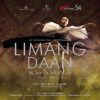What constitutes a portrait? In an ongoing group show at MO_Space in Taguig City, portraits branch out beyond mere iterations of the self.
Inside the show’s world, we become witness to all variations of selfhood and its entangled mesh of forms and figures.
From the enigmatic collages of Luis Antonio Santos to the droopy surrealist scenes of Louie Cordero, the show, titled A Portrait of A Portrait, aims to position portraiture as a metamorphosing medium, capable of accommodating a range of practices, stances, and approaches.

The first of two iterations, A Portrait of A Portrait was curated by painter Elaine Navas. In the show notes, the exhibition’s roving scope emerges as its own form of portrait: “[the show] demonstrates the many ways of representing a subject’s persona; and as a group portrait in itself, it arranges within its view the vast outcomes of forms by artists working with different styles and expertise.”
Reading this show as a group portrait, we see the portrait form across different perspectives. The human form, caught in the crosshairs of the social world, is evidenced in the works of Kawayan de Guia and Lyle Buencamino. Elsewhere, more conceptual approaches to selfhood also find their way into the show. Gary-Ross Pastrana’s “Construction of Self” is a set of 50 postcards that imagines the artist as an entry in an art book. Likewise, in MM Yu’s contribution to the show, she encases the signatures of the artists in a hundred glass slides. These works, in their itinerant and multifarious nature, create portals for envisioning the self beyond the confines of the individual.

On the end of the spectrum, some works in the show attempt to render the portrait as its own thrilling form of blankness, a pure slate where possibilities emerge and take root. Patricia Perez Eustaquio and Carina Santos both probe, through the medium of painting, how the self is created and undone.
In contrast, Jigger Cruz’s freakishly abstract drawings play out like defacements of that purity, filled with esoteric lines and shapes. What does a portrait mean if no faces are present? Is there an alternative way of knowing the self beyond representation? These questions impel the show and lead us to wonder about in what other ways the self can be extended.
Perhaps the most important achievement of this show is the way it creates a community of portraits, a world upon itself that goes beyond the stagnancies of individuality. “The space is filled with a multitude of characters who come in different shapes, conditions, motivations, and forms,” the show notes states. “And these are the representations of a community of artists grouped together as they continue to explore the many ways art can be redefined.”




